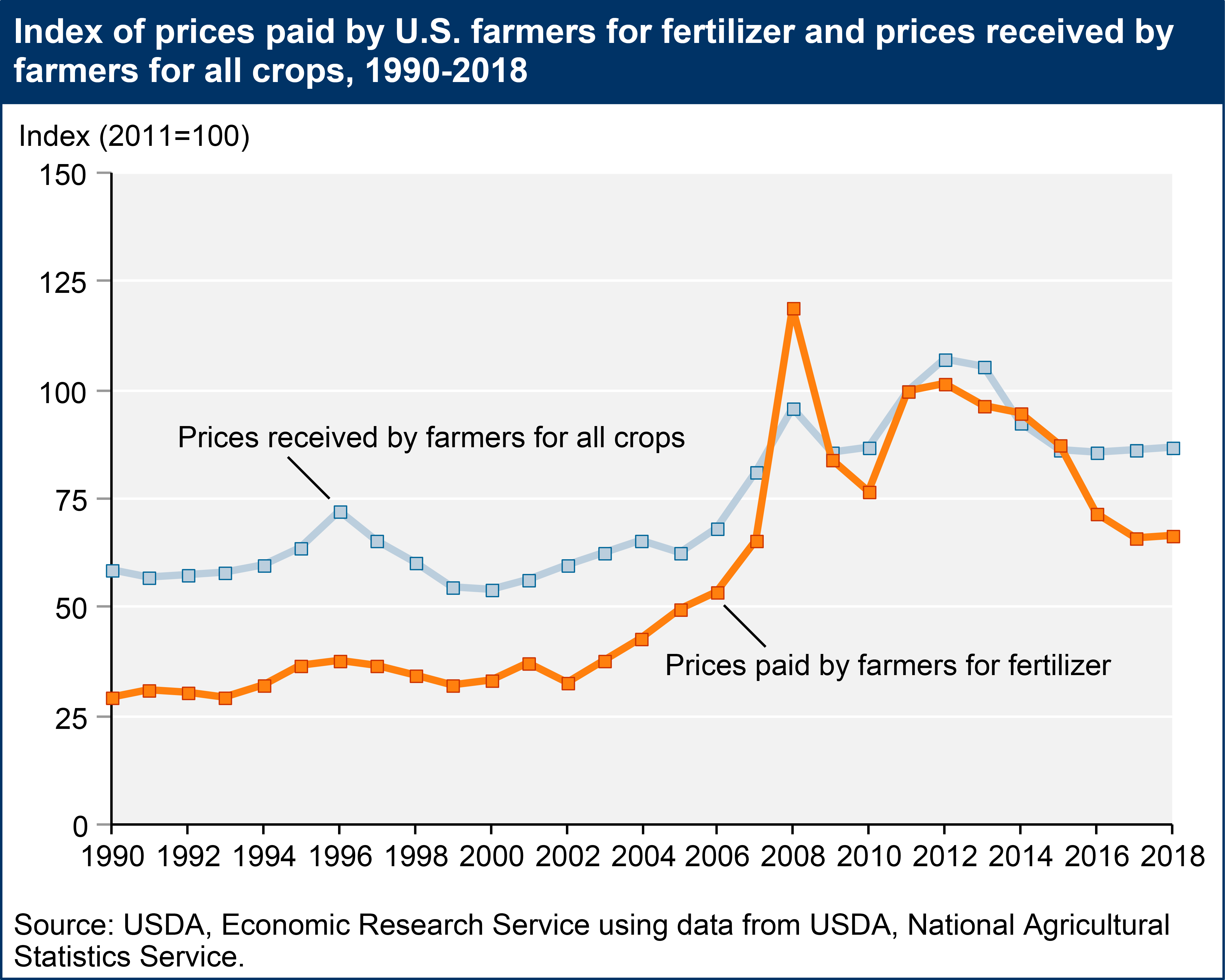The rapid growth in fertilizer consumption throughout the 1960s and 1970s—as more acreage was devoted to high-yield crop varieties and hybrids that responded well to more intensive use of commercial fertilizer—peaked at 23.7 million nutrient short tons (1 short ton is equal to 2,000 pounds) in 1981. Since then, total fertilizer use has fluctuated, with no persistent trend.

Download chart image | Chart data
Fertilizer prices are determined by the interaction of supply and demand. From 1960 through 2002, both fertilizer prices paid and crop prices received by farmers increased in tandem at a fairly modest rate. Between 2002 and 2008, annual fertilizer prices paid by farmers increased rapidly—generally much faster than increases in crop prices received by farmers—and became more volatile. Fertilizer price increases through 2008 were largely driven by high energy prices and high input costs. In response to record fertilizer prices in 2008, farmers reduced their use of fertilizers, contributing to a large decline in fertilizer prices through 2010. Fertilizer prices recovered somewhat—driven by strong domestic demand for plant nutrients due to high crop prices, and limited domestic production capacity—but are currently trending downward, along with crop prices received.

